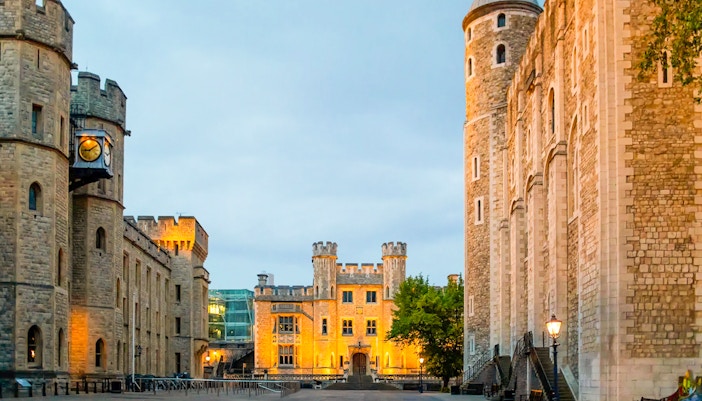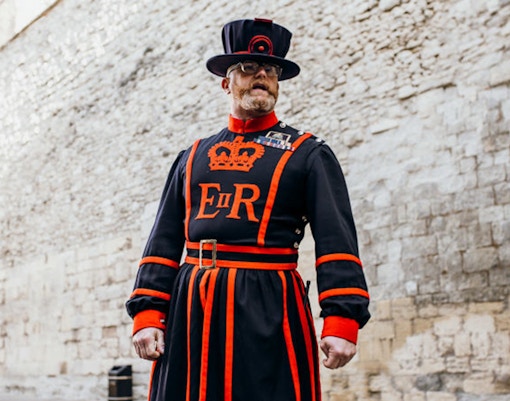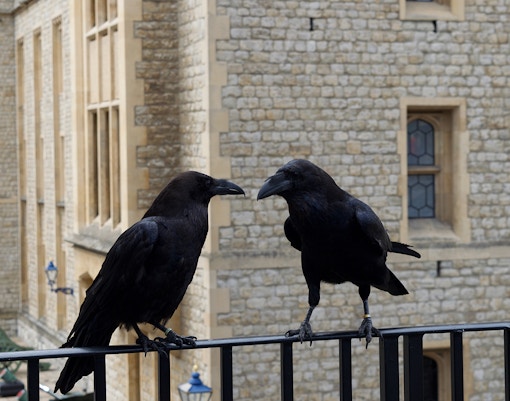The Crown Jewels at the Tower of London are no ordinary gems—they’re packed with over 23,000 sparkling stones, including the world-famous Cullinan diamond and the Imperial State Crown. Guarded by Yeoman Warders, Tower guards, and the Tower Warden, these jewels have witnessed centuries of coronations, royal events, and even a failed heist.
What's inside the Tower of London
Curious about what’s inside? From pricey jewels to legendary tales, here’s a taste of the Tower’s must-see highlights!


White Tower
The White Tower was the original keep built by William the Conqueror’s in the 11th century to awe and dominate London’s skyline with thick walls and epic defenses. It was once a royal home, prison, and even a place for chilling executions Inside, you’ll find the Romanesque Chapel of St John and various displays of the Royal Armouries with incredible arms, armor, and stories from the ages.

St. John’s Chapel
Nestled in the White Tower, the Chapel of St John the Evangelist is the finest surviving example of early Anglo-Norman royal ecclesiastical architecture, dating from around 1080. Its small and intimate size, and delicate carved details transport you straight into the heart of royal worship in Norman times.

Tower Green
Tower Green might look peaceful now, but it’s where history’s highest-profile heads quite literally rolled! This and the adjacent scaffold site where high-status prisoners—Anne Boleyn, Lady Jane Grey, Charles I—met their end. A simple granite memorial now marks the spot of these private executions.

Bloody Tower
Don’t let the name fool you—there’s more to the Bloody Tower than just its spooky reputation! Infamous for the alleged murder of Edward V and his brother Richard in 1483, the Bloody Tower evokes centuries of royal intrigue and disappearance. Inside, you’ll see displays on the Princes in the Tower legend and Sir Walter Raleigh’s imprisonment, all under haunting medieval vaults.

Traitor's Gate
Traitors' Gate, part of St. Thomas' Tower, was built in the late 1270s as a water entrance for King Edward I. Over time, it became infamous as the entry point for prisoners accused of treason, such as Sir Thomas More and Queen Anne Boleyn, who were brought by barge along the Thames. The gate's name has been used since at least 1544, reflecting its grim role in England's history.

Medieval Palace
Once the luxurious lodgings of Henry III and Edward I, the Medieval Palace’s richly decorated rooms evoke 13th-century court life and hospitality. Visitors can explore reconstructed chambers, banqueting halls and private quarters that bring medieval royalty’s daily routines vividly back to life.

St. Peter ad Vincula Chapel
The Tudor-era Chapel Royal of St Peter ad Vincula (built 1519–20) stands within the Inner Ward as the church for Tower residents, and it's the final resting place of those executed in the Tower, including Anne Boleyn and Catherine Howard. Its Tudor windows and simple nave conceal centuries of royal tragedy and reconciliation.

Battlements
Climb the inner curtain walls and towers to patrol the medieval battlements. From these ramparts you’ll enjoy sweeping views of the Thames and city skyline, imagining the sentries who once defended London from attack.

The Royal Mint Museum
Explore the rich history of the Tower's Mint between 1279 and 1812 through the permanent exhibition, "The Tower's Mint: Coins and Kings." Delight in rare objects, including over 80,000 coins from ancient times and 12,000 medals, from the Royal Mint Museum's collection and learn about the monarchs who left their mark through their coinage.

Line of Kings
Installed by Charles II in the 17th century as one of the earliest public armour exhibits, the Line of Kings showcases historic suits and helmets on life-size wooden figures, representing monarchs like Henry VIII, Charles I and James II in full parade dress. It remains a unique glimpse into royal martial pageantry and Restoration-era propaganda.

Fusilier Museum
Housed in the Victorian North Turret, the Fusilier Museum chronicles the Royal Regiment of Fusiliers from its 1685 founding to today, displaying Victoria Crosses, historic uniforms (including George V’s bearskin) and captured French standards. Interactive exhibits trace the regiment’s battlefield exploits and esprit de corps.

Torture at the Tower
In the Lower Wakefield Tower, the “Torture at the Tower” exhibition displays faithful replicas of instruments—such as the rack and iron maiden—used during Tudor and Stuart political and religious upheavals. First-hand accounts and multimedia give chilling insight into interrogation methods and prisoner resilience.

Imprisonment at the Tower
Located in Beauchamp Tower, this exhibition explores the daily lives and personal stories of prisoners—from Lady Jane Grey to Guy Fawkes—through graffiti, documents and recreated cells. It humanises the Tower’s most famous hostages by revealing their hopes, fears and coping strategies behind cold walls.

Ceremony of the Keys
Every night for over 700 years at 9:52 pm, a Yeoman Warder locks the Tower’s gates in the Ceremony of the Keys. The Chief Warder, lantern in hand, challenges sentries with the traditional call-and-response, then secures the outer, middle, and Byward Towers. Visitors on escorted tours witness this timeless, iconic ritual.







